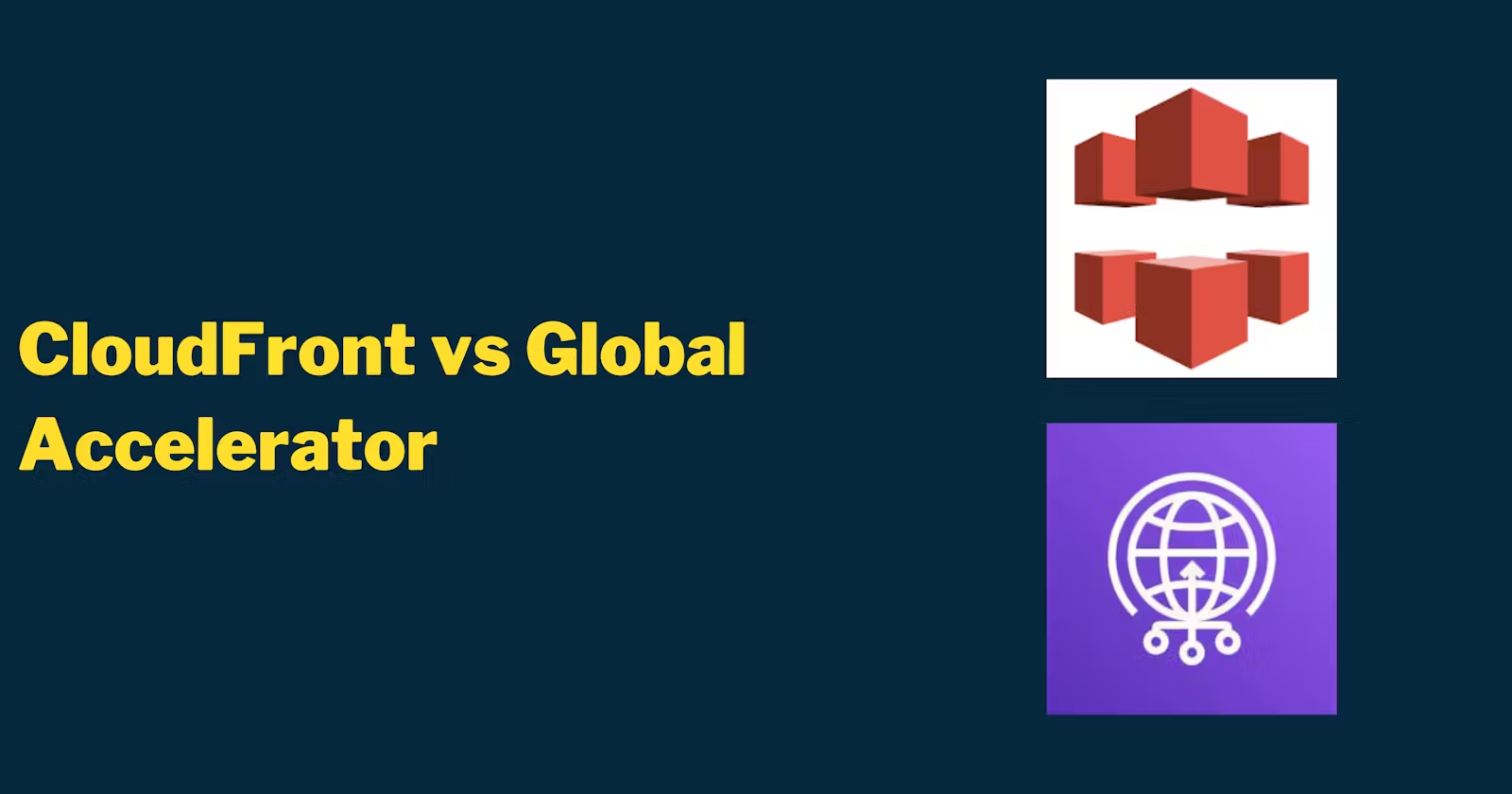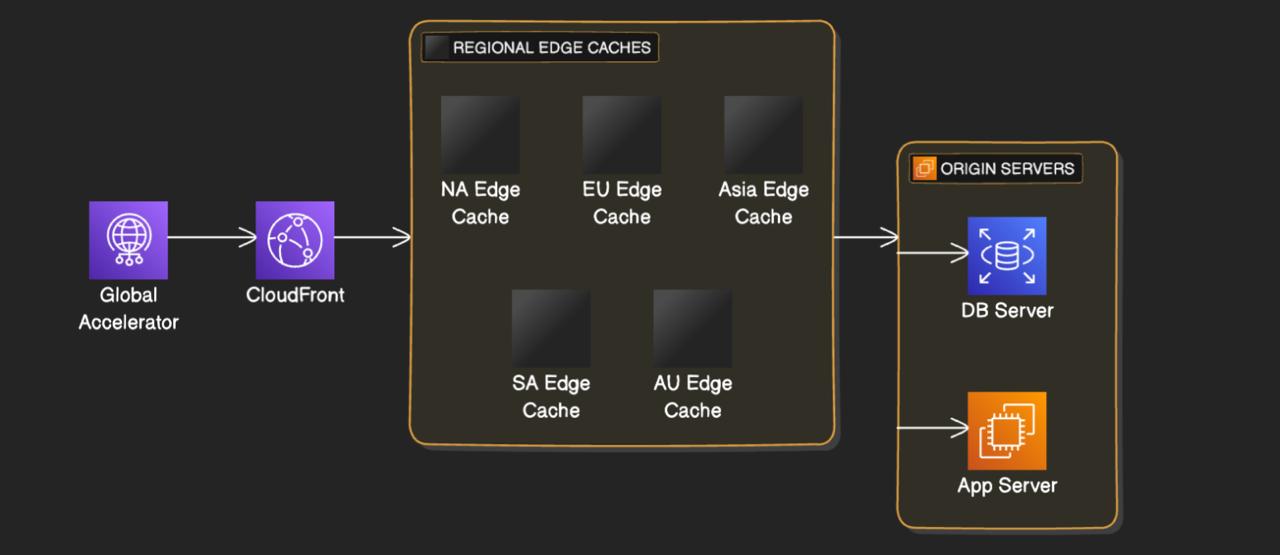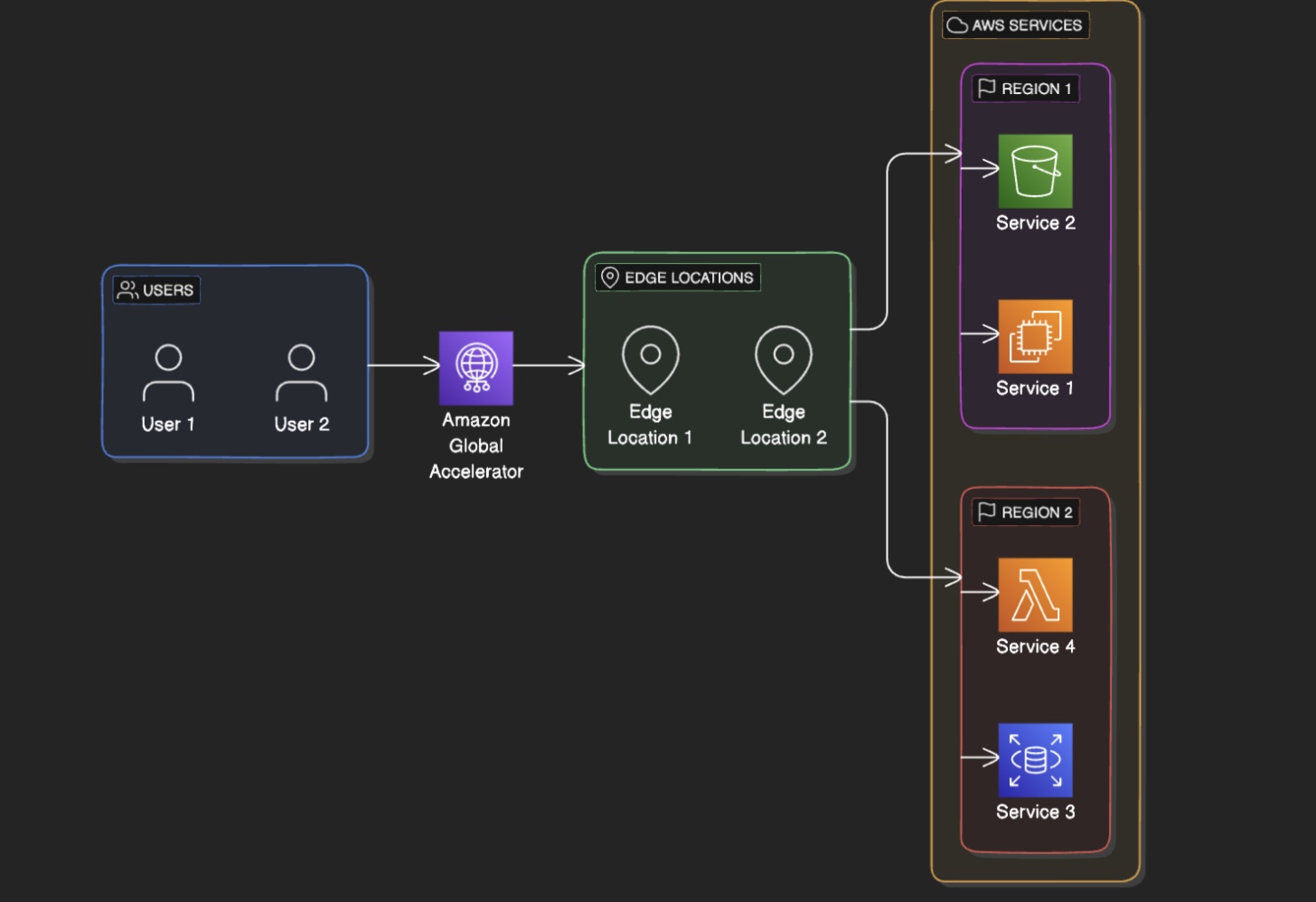CloudFront & Global Accelerator: A Quick Guide
 Aman Srivastav
Aman Srivastav
In today's digital age, users expect websites and applications to load quickly and efficiently, regardless of where they are in the world. AWS offers powerful tools like CloudFront and Global Accelerator to help you deliver content faster, improve security, and optimize user experience. Let's dive into these services and explore their features with real-world examples.
Understanding Content Delivery Networks (CDN)
A Content Delivery Network (CDN) is a system of distributed servers (edge locations) that deliver web content to users based on their geographical location. AWS CloudFront is a popular CDN service that not only improves read performance by caching content at these edge locations but also offers protection against Distributed Denial of Service (DDoS) attacks using AWS Shield.
Example: Imagine you have a website with users across the globe. Without a CDN, every user’s request would have to travel all the way to your origin server, which could be on the other side of the world, leading to slow load times. With CloudFront, the content is cached closer to the user, reducing latency and ensuring faster delivery.
Use Case: An e-commerce website with customers in multiple countries can use CloudFront to deliver product images, videos, and other static content quickly, improving the shopping experience and boosting sales.

Origin Access Control (OAC)
Origin Access Control (OAC) allows you to secure your origin server, such as an S3 bucket or an Application Load Balancer (ALB), ensuring that only CloudFront can access it. This adds an extra layer of security by preventing direct access to your content.
Example: If you host your website’s media files in an S3 bucket, enabling OAC ensures that only CloudFront can serve these files, preventing unauthorized access and potential bandwidth theft.
Use Case: A media streaming service can use OAC to secure its video content, ensuring that only authenticated users can access the content through CloudFront.
CloudFront vs. S3 Cross-Region Replication
CloudFront and S3 Cross-Region Replication both serve the purpose of distributing content to different geographical regions, but they work differently.
CloudFront caches content at edge locations close to users, providing low-latency access.
S3 Cross-Region Replication copies your data across AWS regions for disaster recovery and compliance but doesn't provide caching.
Example: For a blog with a global audience, CloudFront would cache your blog posts at edge locations, allowing users to access them quickly. S3 Cross-Region Replication, on the other hand, could be used to ensure that your blog’s content is safely stored in multiple regions for redundancy.
Use Case: A global news website can use CloudFront to deliver breaking news content quickly to users worldwide, while S3 Cross-Region Replication ensures that the content is backed up in multiple regions for data durability.
CloudFront with Application Load Balancer (ALB) as Origin
CloudFront can be configured to use an Application Load Balancer (ALB) as its origin, which is ideal for dynamic content that needs to be processed by backend servers before being served to users.
Example: An online gaming platform that needs to deliver real-time scores and player stats can use an ALB as the origin for CloudFront. The ALB distributes incoming traffic to multiple servers, ensuring that the content is processed and delivered quickly and efficiently.
Use Case: A SaaS application delivering personalized dashboards to users can leverage CloudFront with an ALB as the origin to ensure fast and reliable content delivery, even under heavy load.
CloudFront Geo Restrictions
With CloudFront Geo Restrictions, you can control which countries can access your content. This is useful for complying with licensing agreements or restricting access based on the location of the user.
Example: A video streaming service might have content that is only licensed for certain regions. Geo restrictions allow the service to block access from countries where the content is not licensed, ensuring compliance with legal agreements.
Use Case: An online retailer could restrict access to its website from certain countries where it doesn’t ship products, preventing unnecessary traffic and potential fraud.
CloudFront Price Classes
CloudFront Price Classes allow you to control the cost of delivering content by selecting the regions where your content will be served. AWS offers different price classes based on the number of edge locations used.
Price Class 100: Uses only the most cost-effective edge locations.
Price Class 200: Uses more edge locations but still excludes some higher-cost regions.
Price Class All: Uses all available edge locations.
Example: If your primary audience is in North America and Europe, you might choose Price Class 100 to minimize costs by serving content only from edge locations in these regions.
Use Case: A small business with a limited budget can use CloudFront Price Classes to reduce costs while still ensuring fast content delivery to its primary customer base.
CloudFront Cache Invalidation
CloudFront Cache Invalidation allows you to remove cached content from edge locations, ensuring that users receive the most up-to-date version of your content.
Example: If you update a product image on your e-commerce site, you can use cache invalidation to remove the old image from CloudFront’s cache, so users see the updated image immediately.
Use Case: A news website can use cache invalidation to quickly update headlines and articles, ensuring that users always see the latest news.
AWS Global Accelerator
AWS Global Accelerator is a service that improves the availability and performance of your applications with a global user base. It directs user traffic to the optimal endpoint using the AWS global network, reducing latency and improving the user experience.
Example: A social media platform with users around the world can use Global Accelerator to ensure that users always connect to the nearest and fastest server, reducing load times and improving responsiveness.
Use Case: An online multiplayer game can use Global Accelerator to reduce latency for players, providing a smoother and more competitive gaming experience.

Hope this was helpful. Thank you for your time !!
Stay Connected, many more to come !!
Subscribe to my newsletter
Read articles from Aman Srivastav directly inside your inbox. Subscribe to the newsletter, and don't miss out.
Written by

Aman Srivastav
Aman Srivastav
Storage/Cloud Engineer by profession and Aspiring Devops Engineer by passion ... We can always be in touch , lets connect on LinkedIn. www.linkedin.com/in/aman-srivastava-Dev